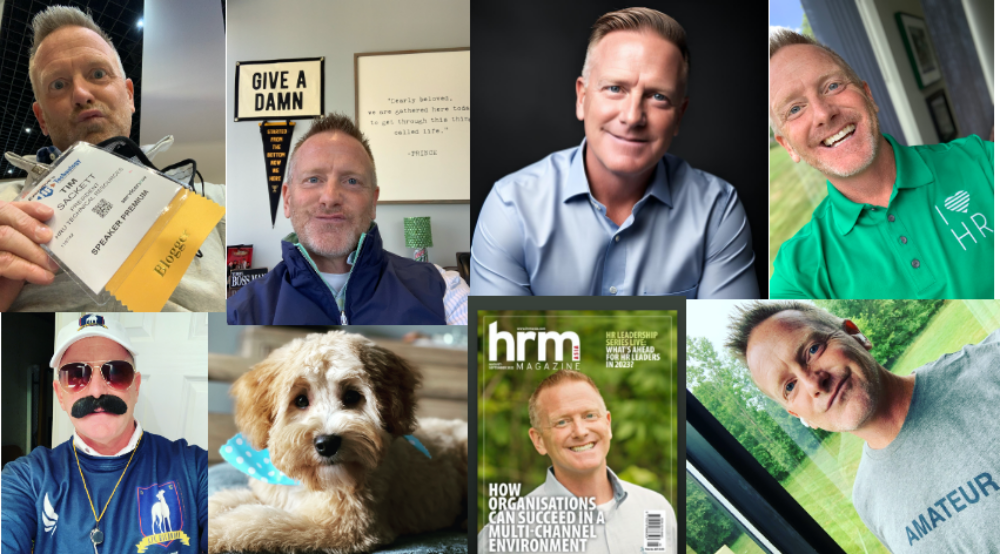Hello. My name is Tim Sackett, and I’m a hugger. Being a hugger can make for some awkward moments – what if the other person isn’t expecting a, or doesn’t want to, hug and you’re coming in arms-wide-open!?
Fast Company has an article recently titled: To Hug Or Not To Hug At Work? by Drake Baer, that delved into this subject. Here’s a piece from the article:
“the uncomfortable feeling you get when you realize that your concept of your relationship with someone else doesn’t match their concept. The intensity of awkwardness roughly corresponds to the magnitude of difference in relationship concepts.”
I consider myself to have a number of roles: Husband, Dad, Coach, Boss, Friend, Coworker, etc. In each of those roles I’ve hugged and will continue to hug. Sometimes, though rarely, I’ll find someone who isn’t a hugger. The first time I ever met Kris Dunn face-to-face, we’ve had known each other and talked frequently by phone for a year, at the HR Tech Conference – he was coming out of a session, I recognized him, he recognized me, and I went full ‘bro-hug’ (sideways handshake, other arm hug-back slap combo) on him, and I’m pretty sure he was caught off guard – but played along. Kris is a closet hugger. Jason Seiden, he’s a hugger. So are Laurie Ruettimann and Dawn Burke. I find Southern folks are huggers, more than Northern. Western more than Eastern. Canadians more than Americans. Men feel much more comfortable hugging women than other men. Women will hug anything.
I thought it was about time we had some hugging rules for the office, so here goes:
The Hugging Rules
1. Don’t Hug those you supervise. (The caveats: You can hug a subordinate if: it’s being supportive in a non-creepy way (major family or personal loss – sideways, kind of arm around the shoulder, you care about them hug); it’s at a wedding and you are congratulating them; it’s a hug for a professional win (promotion, giant sale, big project completion, etc.) and it’s with a group, not alone in your office with the lights off; you would feel comfortable with your spouse standing next you and watching that specific hug.)
2. Hug your external customers or clients when they initiate hugging sequence. (The caveats: Don’t hug if: it is required to get business – that’s not hugging, that harassment. Don’t let hug last more than a second or two, or it gets creepy; Don’t mention the hug afterwards, that makes you seem creepy!)
3. Don’t Hug the office person you’re having an affair with in the office. (no explanation needed)
4. Hug peers, not just every day. (It’s alright to hug, but you don’t need to do it everyday for people you see everyday. Save some up and make it special!)
5. When you Hug, hug for real. (Nothing worse than the ‘fake hug’! A fake hug is worse than a non-Hug.)
6. Don’t whisper – ‘You smell good’ – when hugging someone professionally. (That’s creepy – in fact don’t whisper anything while hugging!)
7. Don’t close your eyes while hugging professionally. (That’s weird and a bit stalkerish)
8. It is alright to announce a Hug is coming. (Some people will appreciate a – ‘Hey! Come here I’m giving you a hug – it’s been a long time!’)
9. It’s never alright to Hug from behind. (Creepier!)
10. Never Hug in the restroom. (Make for awkward moment when other employees walk in and see that.)
11. If you’re questioning yourself whether it will be alright to Hug someone professionally – that is your cue that it probably isn’t.
Do you have any hugging rules for the office?
